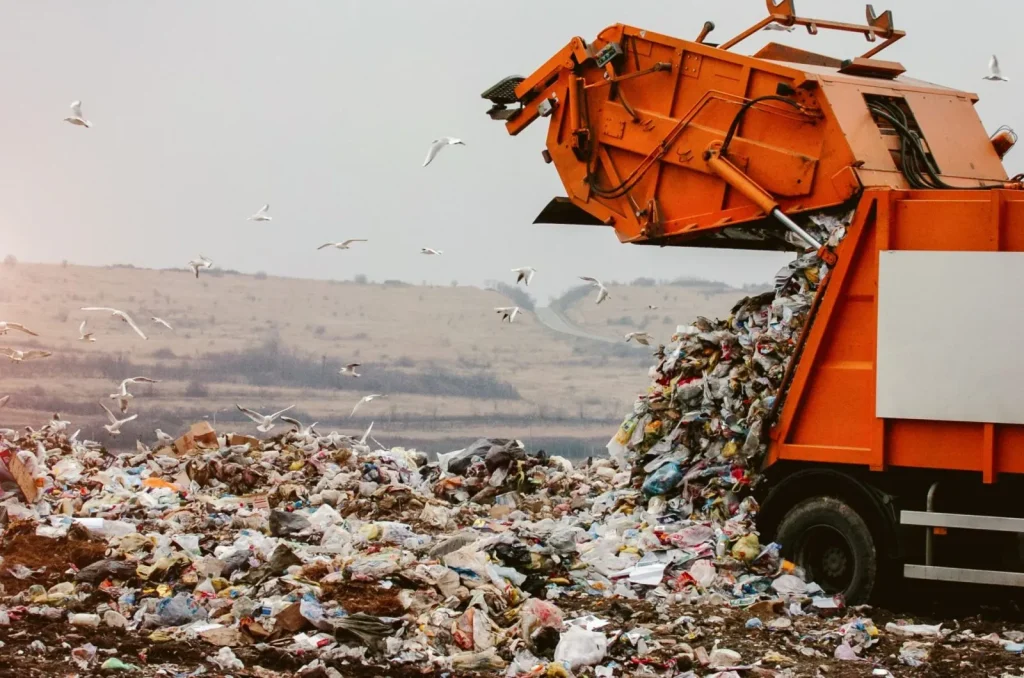In the vision of a wasteless Industry 5.0 era, the world is not just a distant dream but an achievable reality. This new approach requires us to rethink how we prevent waste, focus on new ideas, work together, and make big changes to the way things are done. At the heart of this transformation is the circular economy.
Unlike the traditional linear model, where products are made, used, and then thrown away, a circular economy sees waste as a resource. Products are designed to last longer, be reused, and be regenerated, ensuring that materials stay in use instead of going to landfills.
This approach calls for innovative product design, using sustainable materials that can be recycled, biodegraded, or easily returned to the environment. However, moving towards a wasteless world also depends on educating consumers and changing their behaviour.
It is important to give people and communities the knowledge they need to make sustainable choices. Awareness campaigns that show the effects of waste and encourage responsible consumption can help create a culture of environmental care.
Policy and regulation play an equally vital role in this journey. Strong policies that incentivize waste reduction at the source, enforce Extended Producer Responsibility (EPR) programs, and set stringent standards for waste management are necessary to drive meaningful change.
READ RELATED: Plastic Waste is Up But Technologies to Recycle it Still Struggling
These regulations must be complemented by collaborative partnerships among governments, businesses, NGOs, and communities, creating a unified front against waste. Furthermore, technology and innovation are key enablers in this new paradigm.
Technologies like AI, IoT, and blockchain can optimize supply chains, enhance transparency, and reduce inefficiencies in waste management processes.
Community-led initiatives can also serve as powerful drivers of change, with local solutions and shared best practices contributing to broader sustainability goals.
Reimagining a wasteless world through the lens of Industry 5.0 embraces a future where waste is minimized, resources are preserved, and every individual contributes to building a more sustainable and resilient planet. Together, we can turn the vision of a wasteless world into a reality.
Marine Permaculture: A Path to Wasteless and Sustainable Future
Marine permaculture is an innovative approach to restoring and cultivating underwater ecosystems, particularly focusing on seaweed, such as kelp. This method holds significant potential in addressing climate change while promoting the goals of Industry 5.0 and a wasteless world.
Seaweeds, especially kelp, are incredibly efficient at absorbing carbon dioxide. By capturing this greenhouse gas, marine permaculture is vital in reducing atmospheric carbon levels and helping mitigate climate change.
This natural process aligns with the principles of Industry 5.0, where technology and nature work together to create a more sustainable future.
Furthermore, marine permaculture supports biodiversity by providing habitats for many marine species. Healthy kelp forests serve as nurseries for fish and other sea life, essential for maintaining the balance of marine ecosystems.
This boost in biodiversity enhances oceans’ resilience against the impacts of climate change, ensuring that these vital ecosystems can continue to thrive. In addition to environmental benefits, marine permaculture contributes to the vision of a wasteless world.
ALSO, READ Climate Change Innovations: Tech and Ideas for a Greener Planet
Seaweed can be sustainably harvested and utilized in various ways, from food production to biofuels and even bioplastics. By fully utilizing these resources, we can reduce waste and lessen our reliance on non-renewable materials.
This closed-loop system exemplifies the core idea of a wasteless world, where every resource is used efficiently and sustainably. Marine permaculture also offers coastal protection by acting as a natural barrier against storms and erosion. The presence of healthy kelp forests can reduce the impact of strong waves, helping to protect shorelines and communities from the increasingly severe effects of climate change.
It is a powerful tool for building a sustainable future. By restoring underwater ecosystems and promoting the efficient use of resources, it supports the goals of Industry 5.0 and a wasteless world, offering hope for a healthier planet.

